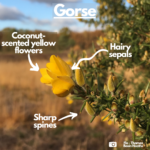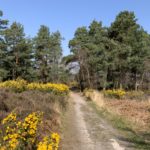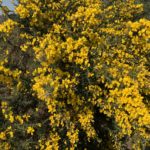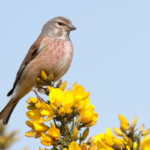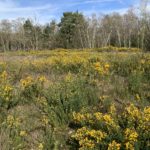Common Gorse

Back Cross-leaved Heath Common Heather Bell Heather Common Gorse Dwarf Gorse Sundew
COMMON GORSE
Ulex europaeus
Common Gorse is very similar in appearance to low-growing Dwarf Gorse and Western Gorse, but can grow up to 2.5 metres high. It is a robust, evergreen shrub with long spiky leaves and coconut-scented flowers. A member of the pea family. It provides vital food and shelter for Dartford Warblers over the winter period, shelter for many insects and other ground-nesting birds such as Stonechats.
The name ‘gorse’ is derived from the Old English word ‘gorst’, meaning ‘wasteland’ or uncultivated area.
- The bright yellow gorse looks lovely and flowers for much of the year
- The bright yellow gorse looks lovely and flowers for much of the year. What does it smell of?
- Male linnet perched on flowering gorse
- Lovely display of gorse in bloom, April 2022. Compact gorse shrubs like this make ideal nesting habitat for some species of birds.
[Click on the thumbnails to open]
Where/when to find it
Although sporadically flowering throughout the year, it flowers mainly from January to June. It can be found in a large variety of habitats, including heathland and moorland, woodland, grassland, coastal regions, farmland, and wetlands.
Adaptations
Tolerant of moderate shading, Common Gorse can thrive under partial tree canopy. Its deep roots and small leaves enable it to establish successfully in dry areas.
Rarity
It is common and widespread throughout the UK, occurring in a variety of different habitats.
Read more
On Plant Life’s website: Gorse
#MoreThanJustNightjars

